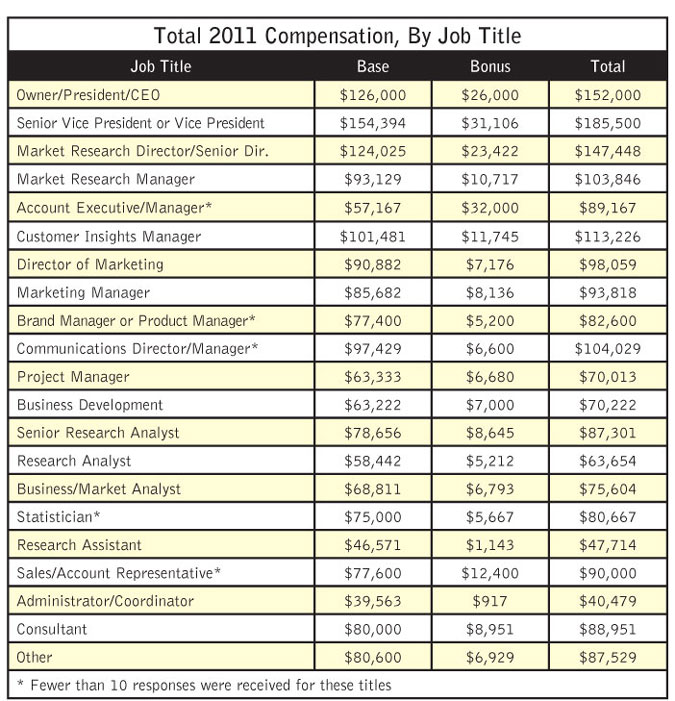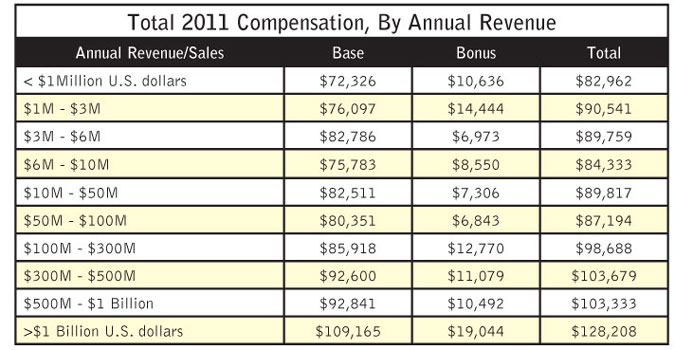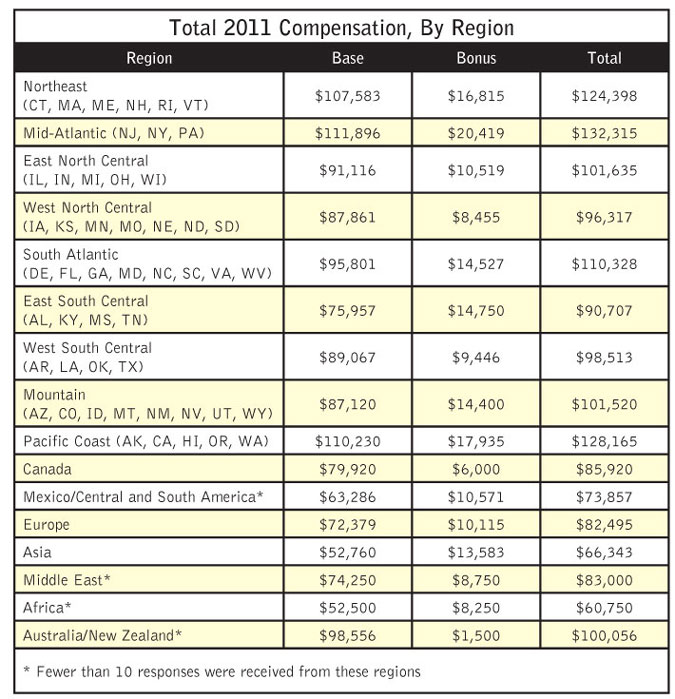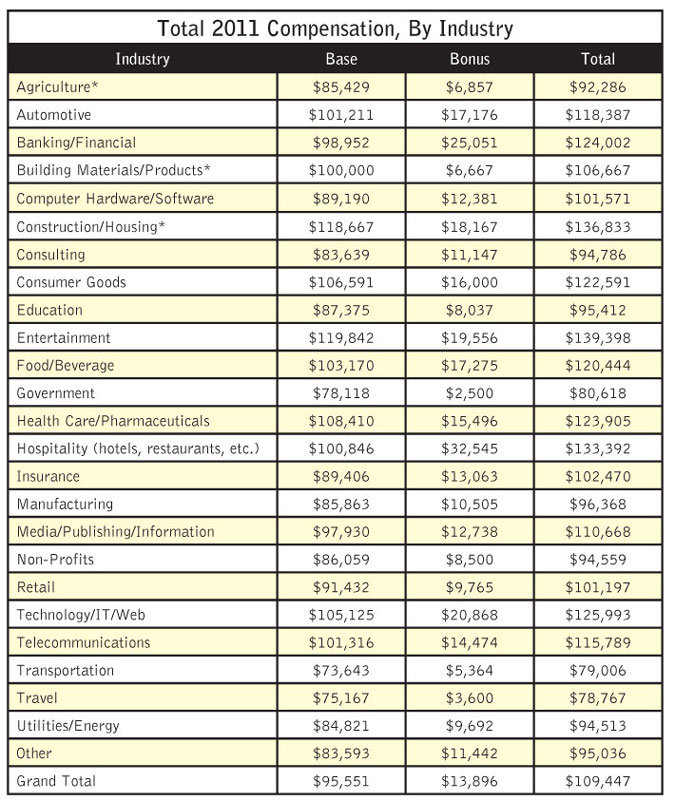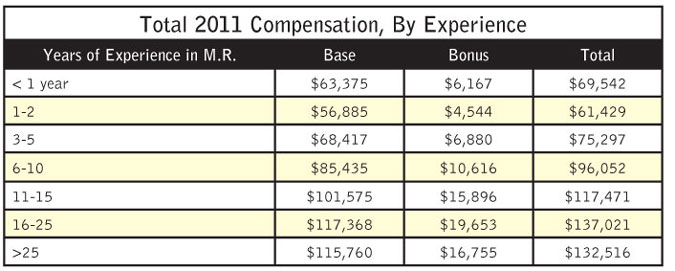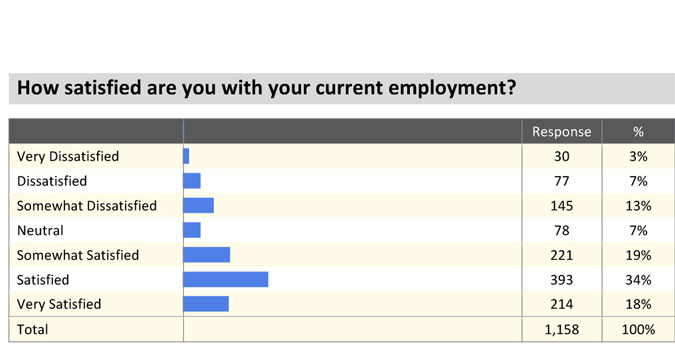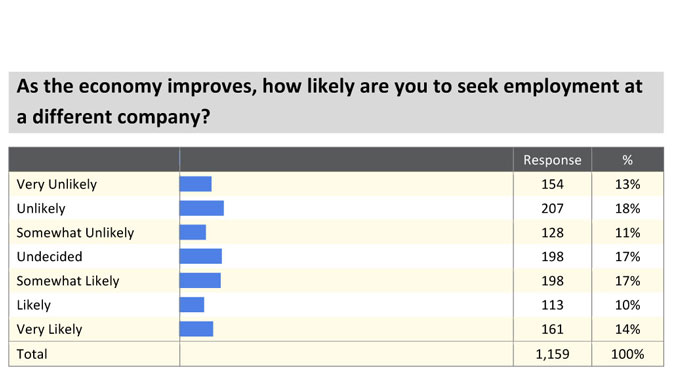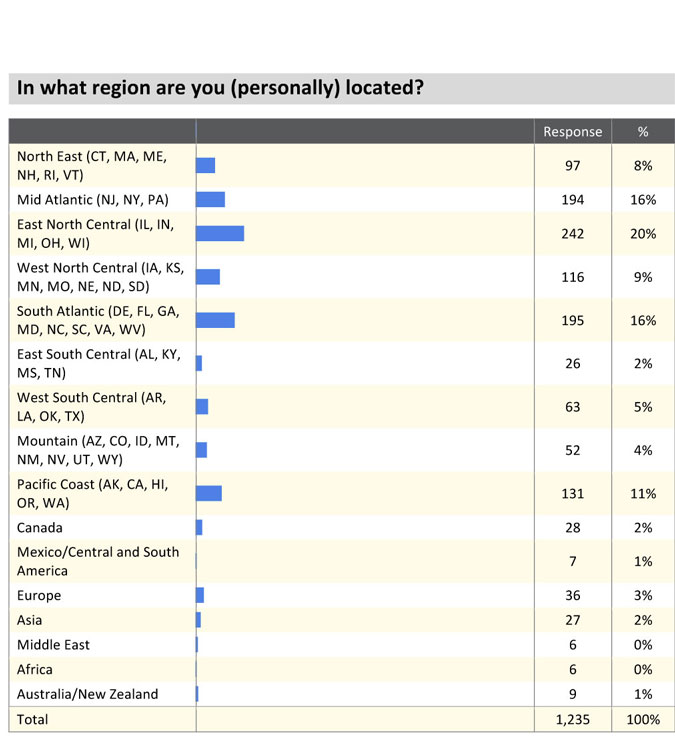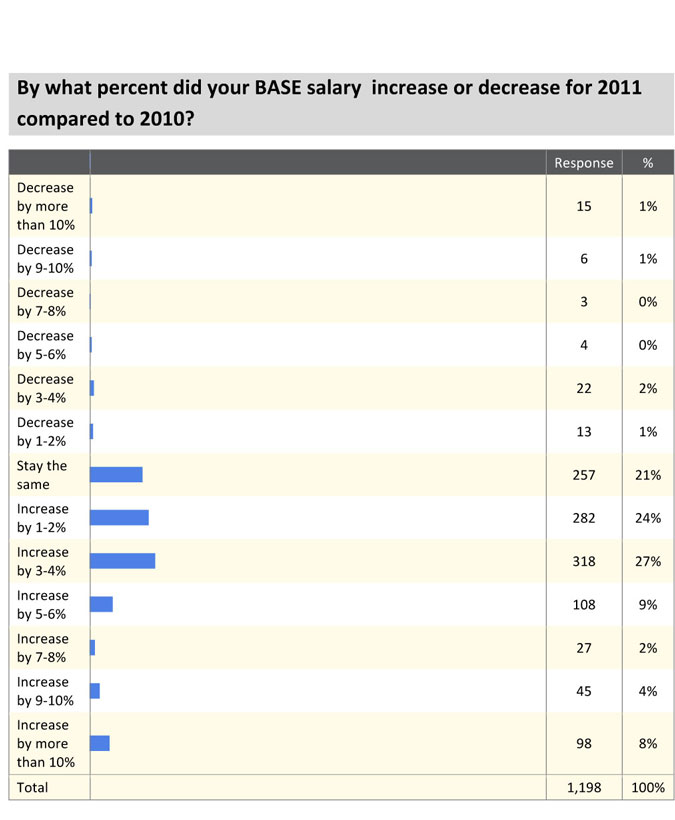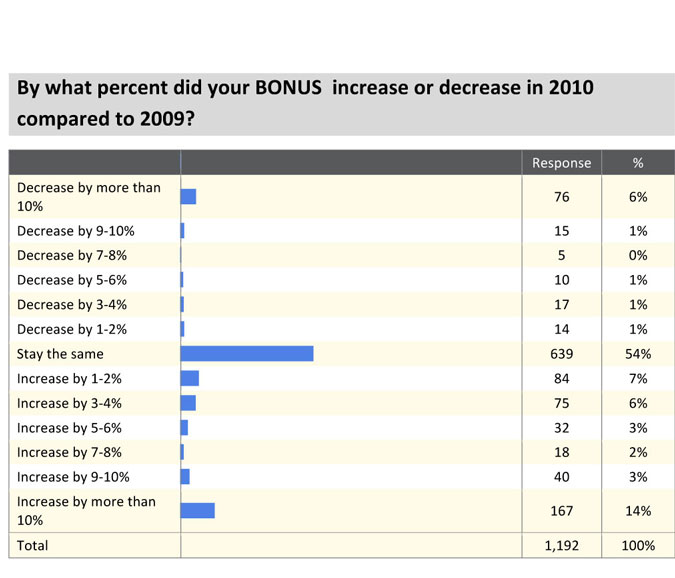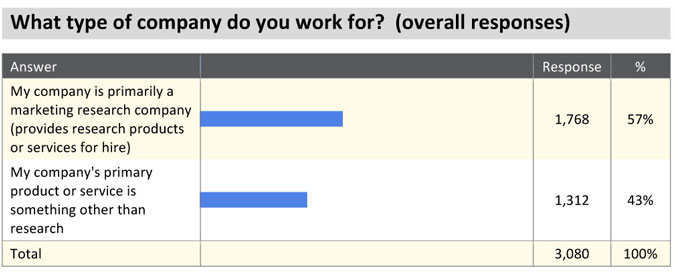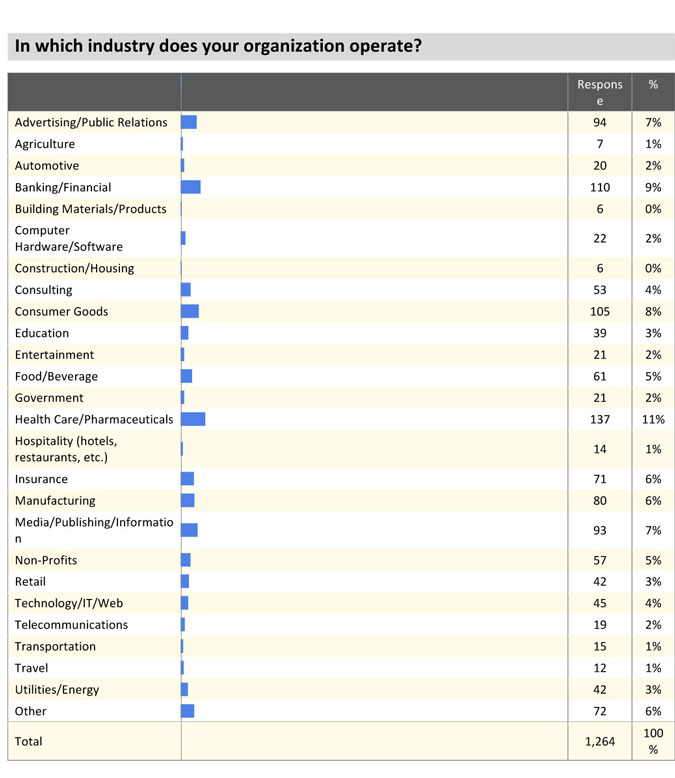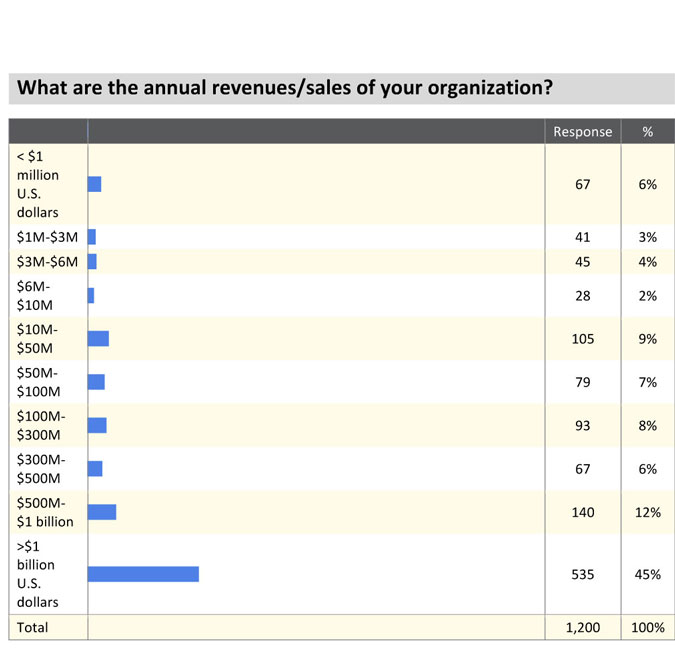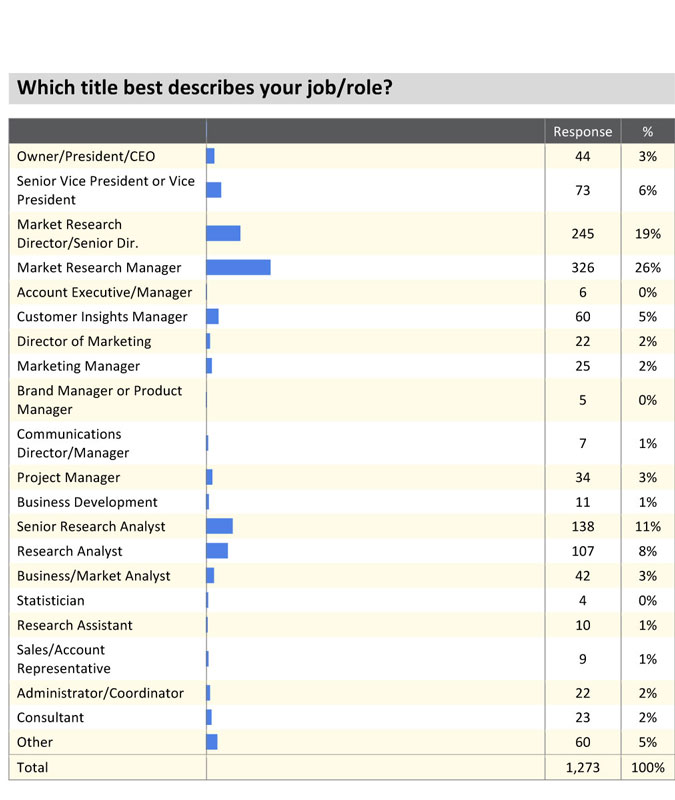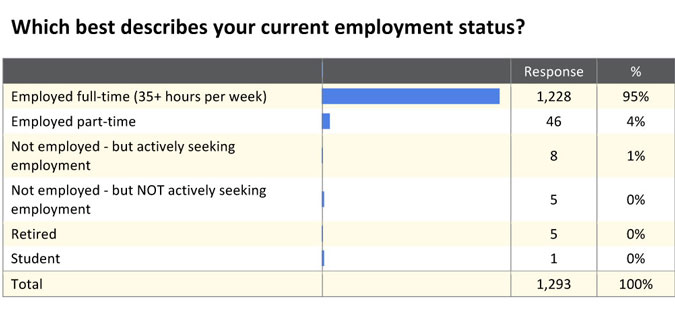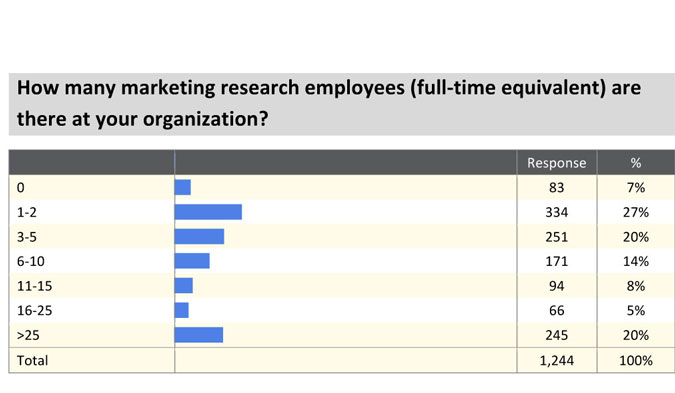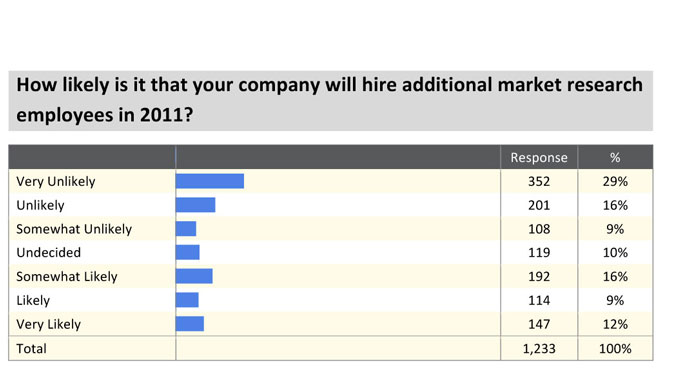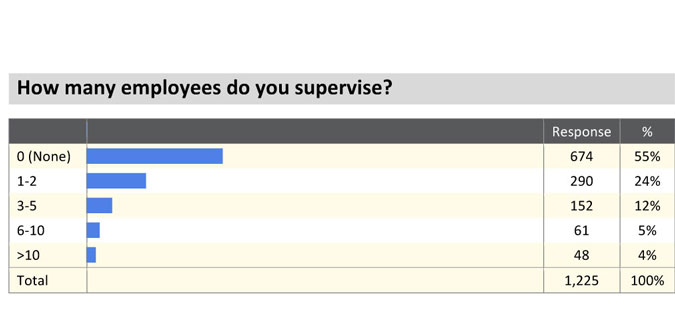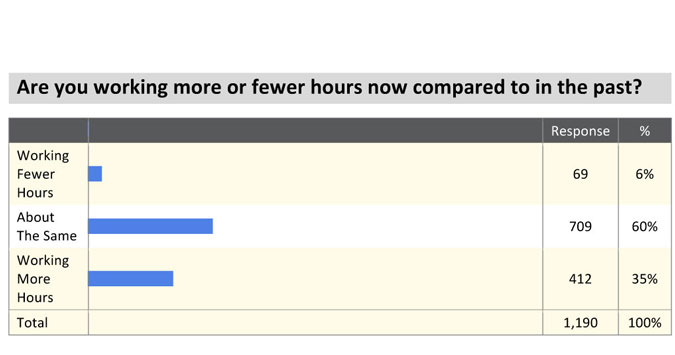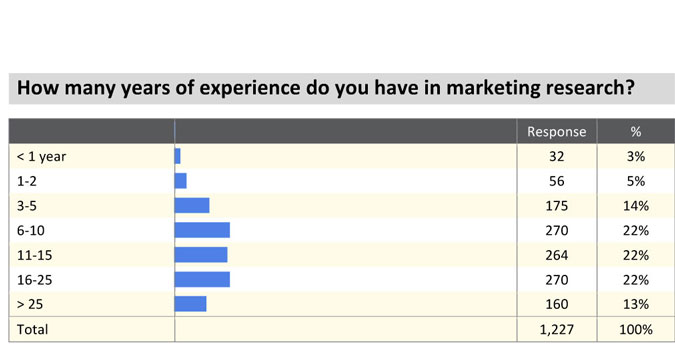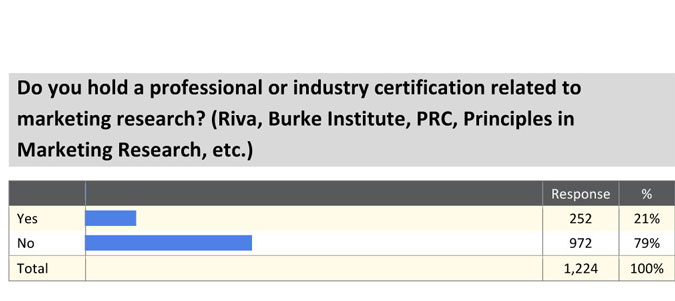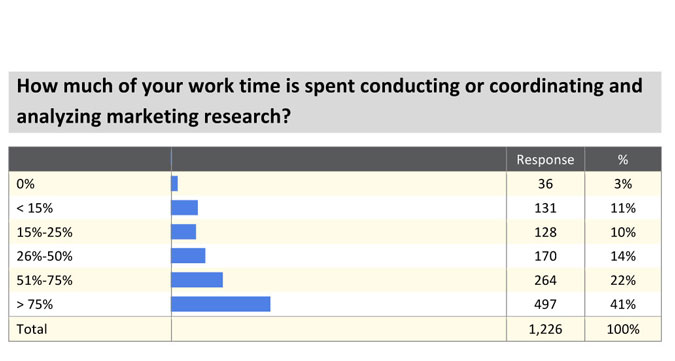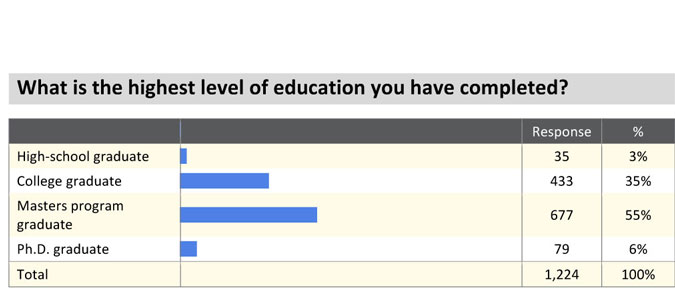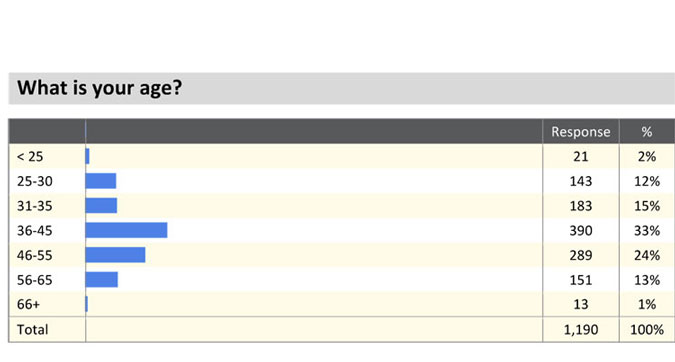Job security, professional insecurity
The more things change, the more they stay the same. An examination of the results of our 2011 salary survey of client-side researchers shows numbers remarkably similar to those from 2010, almost across the board.
Despite the poor economy, nearly three-quarters reported either stable or slightly increased base salaries, with 21 percent saying their 2011 salary stayed the same, 24 percent citing an increase of between 1 and 2 percent, and 27 percent netting an increase in the range of 3 to 4 percent. A fortunate 8 percent said their base increased by 10 percent or more.
Over half (54 percent) said their bonus stayed the same and a combined 35 percent claimed bonus increases of 1 percent to over 10 percent. (We received nearly 1,200 usable completed surveys and achieved an interval of 1.7 at the 95 percent confidence level. Not all respondents answered all questions.)
Respondents claimed good levels of job satisfaction, with 34 percent claiming to be satisfied and 18 percent saying they were very satisfied. Job dissatisfaction did bump up slightly compared to last year, with a combined 23 percent reporting some level of dissatisfaction compared to 20 percent last year.
While it’s hard to draw a link between that slight increase and the rise of social media, many responses to this year’s open-ended questions pointed at social media data analysis as a particularly sharp thorn in the corporate researcher’s side.
Our open-ends this year asked about the biggest challenges facing marketing research in the next few years and about respondents’ views of what is needed to improve the reputation and standing of marketing research as a profession (see Trade Talk for more a more in-depth look at some of the responses).
As for the biggest challenges, the perennial problems of budget woes, lack of respect for the function and the pressures of demonstrating ROI were overshadowed by unease caused by the current focus on mining insights from social media and other Web-generated data sources. Many comments mirrored these three:
“Becoming obsolete as other specialties provide similar insights through different tools (Web metrics, smart monitoring of information flows, etc.) at much lower costs or as part of a broader, fuller picture of consumer behavior.
“Business partners who think all the answers are in tweets and FB postings.”
“The woo factor and misdirected feeling that all will be known from social media in the future and there will be no need for professional research. Getting too enamored with the buzz of neat/new/sexy ways to get information and thinking that well-managed, thoughtful research is no longer needed ... and certainly not cool.”
DIY research is also high on the list of bugaboos. One respondent cited the difficulty of “… maintaining quality standards for research when the expectations are increasingly that anyone can do research for practically free and it’s all the same quality.”
On improving the image and reputation of research, suggestions included more educational/training programs at the college level, to train the next generation of researchers; and keeping the research function in the hands of researchers (“Get rid of people who think they know how to write a survey, and let those who do know how to write surveys do it!”).
Some recognized the uphill battle of changing perceptions among the public (“It’s hard to get past the image of ‘those survey people’ who waylay you at the mall or call during supper.”) and management (“Shed stereotype of survey builder and number cruncher in favor of key role in strategic planning and competitive intelligence.”).
Some felt that research’s reputation is just fine, thank you:
“I think it is a very respected profession.”
“Does it have a bad reputation? This, if true, would be due to ‘polls’ and telemarketers/spammers and the inability of average people to tell the difference.”
“I think it has a good reputation, just not high awareness.”
Employment at a different company
A greater number (14 percent this year vs. 10 percent last year) of respondents said they were very likely to seek employment at a different company as the economy improves. And a lower number (13 percent - down from 17 percent last year) said they were very unlikely to look for employment at a different company.
They may find a few more job opportunities than last year, as the numbers of respondents reporting increased likelihood that their companies will add additional research staff rose slightly from last year. Sixteen percent (up from 12 percent) said it was somewhat likely while the number claiming it was very unlikely declined from 33 percent in 2010 to 29 percent this year.
If they do go looking elsewhere, they can bring healthy levels of experience with them. Thirteen percent of respondents claim more than 25 years in marketing research, while 22 percent have logged 16 to 25 years, another 22 percent have 11 to 15 years under their belts and an additional 22 percent check in with six to 10 years in the business.
Variety of industries
Respondents work in a variety of industries, from agriculture to utilities, with health care/pharma, banking/financial, consumer goods, advertising/PR, manufacturing, media/publishing/information and insurance as the best-represented fields. Nearly half of the respondents (45 percent) work at companies with sales of $1 billion or higher, with an additional 12 percent reporting annual sales of between $500 million and $1 billion.
Mirroring the 2010 results, the most-cited job titles/roles included market research manager (326), market research director/senior director (245), senior research analyst (138), research analyst (107), senior vice president or vice president (73) and customer insights manager (60).
Over a quarter (27 percent) said there are between one and two full-time-equivalent marketing research employees at their firm; 20 percent say three-to-five full-time MR workers and 20 percent say the in-house research staff numbers 25 or higher.
Over half (55 percent) don’t supervise any employees. Nearly a quarter (24 percent) supervise one to two workers and 12 percent supervise three to five employees.
Again similar to last year, over half (60 percent) of these client-side researchers report they are working about the same number of hours, and 35 percent are logging more time in the office than last year.
Forty-one percent said they spend more than 75 percent of their time conducting or coordinating and analyzing marketing research. Twenty-two percent work 51 percent to 75 percent of the time on research and 14 percent allot 26 percent to 50 percent of their time.
Master’s degrees are the order of the day for this group, with 55 percent stating they are graduates of a master’s program (6 percent have a Ph.D.).
In numbers identical to 2010, only 21 percent said they hold a professional or industry certification related to marketing research (such as those offered by RIVA, Burke Institute, PRC, Principles of Marketing Research, etc.).
Energizing effect
Last year’s salary-survey open-ends asked about what respondents liked most about their jobs. Several comments touched on the energizing effect of constant change - every day brings new projects, new challenges, etc. Based on comments from this year’s iteration, change is again a driving force but a much less welcome and salutary one.
Change circa 2011 means an avalanche of data - the value of which is questionable - from a host of new sources and an accompanying onslaught of internal requests (demands) to make sense of it all. Facing these and other pressures, researchers will no doubt remain busy as always, answering the internal calls for insights while fighting to keep their job function from turning into something “anyone can do.”
